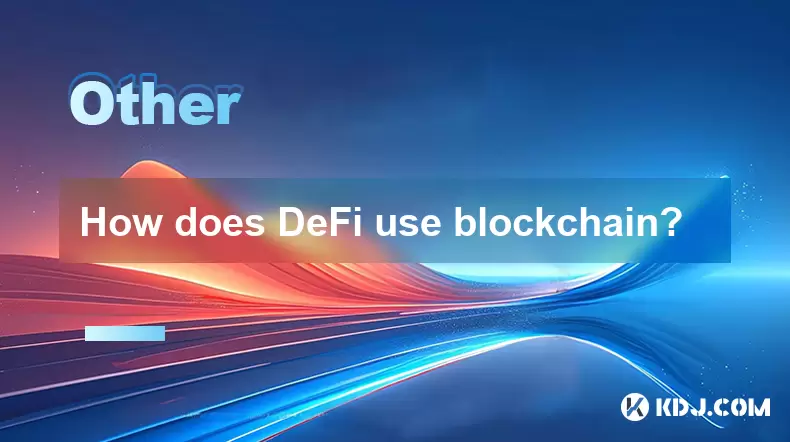-
 Bitcoin
Bitcoin $113700
0.66% -
 Ethereum
Ethereum $3471
-0.04% -
 XRP
XRP $2.885
-0.16% -
 Tether USDt
Tether USDt $1.000
0.05% -
 BNB
BNB $747.8
-0.10% -
 Solana
Solana $161.1
-0.98% -
 USDC
USDC $1.000
0.02% -
 TRON
TRON $0.3255
-0.22% -
 Dogecoin
Dogecoin $0.1980
1.46% -
 Cardano
Cardano $0.7237
2.87% -
 Hyperliquid
Hyperliquid $37.79
0.87% -
 Stellar
Stellar $0.3941
5.48% -
 Sui
Sui $3.422
1.35% -
 Chainlink
Chainlink $16.14
1.97% -
 Bitcoin Cash
Bitcoin Cash $540.7
1.55% -
 Hedera
Hedera $0.2432
4.26% -
 Ethena USDe
Ethena USDe $1.001
0.04% -
 Avalanche
Avalanche $21.31
-0.06% -
 Toncoin
Toncoin $3.624
1.19% -
 Litecoin
Litecoin $109.0
0.76% -
 UNUS SED LEO
UNUS SED LEO $8.967
0.09% -
 Shiba Inu
Shiba Inu $0.00001217
1.84% -
 Polkadot
Polkadot $3.584
1.85% -
 Uniswap
Uniswap $9.123
2.03% -
 Monero
Monero $294.7
0.87% -
 Dai
Dai $0.0000
0.01% -
 Bitget Token
Bitget Token $4.322
0.60% -
 Pepe
Pepe $0.00001048
2.65% -
 Cronos
Cronos $0.1329
2.05% -
 Aave
Aave $257.0
1.88%
What is on-chain governance in a blockchain?
On-chain governance empowers token holders to vote on proposals affecting network rules and upgrades, ensuring decentralized and democratic decision-making on the blockchain.
Apr 12, 2025 at 10:28 pm

On-chain governance is a critical aspect of decentralized blockchain networks, enabling the community to make decisions about the protocol's future directly on the blockchain. This method contrasts with off-chain governance, where decisions are made outside the blockchain, often leading to slower and less transparent processes. On-chain governance empowers token holders to vote on proposals that can affect the network's rules, upgrades, and other significant changes. By integrating the decision-making process into the blockchain itself, on-chain governance ensures that the network remains decentralized and democratic.
The Mechanics of On-Chain Governance
On-chain governance operates through a set of predefined rules and smart contracts that allow token holders to submit, vote on, and implement proposals. The process typically involves token holders creating proposals, which are then voted on by the community. If a proposal reaches a certain threshold of approval, it is automatically implemented into the blockchain's protocol. This system ensures that changes to the network are made transparently and in accordance with the community's wishes.
Key Components of On-Chain Governance
Several components are essential for the effective functioning of on-chain governance. Firstly, smart contracts play a crucial role by automating the voting and implementation process. These contracts are programmed to execute specific actions based on the outcome of the voting process. Secondly, the voting mechanism itself is critical, as it determines how proposals are approved or rejected. Different networks may use different voting systems, such as simple majority, supermajority, or quadratic voting. Lastly, the token distribution is vital, as it influences who has the power to vote and thus impact the network's direction.
Examples of On-Chain Governance in Action
Several blockchain projects have implemented on-chain governance with varying degrees of success. Tezos, for instance, uses a system called 'baking' where token holders can vote on protocol upgrades. This system has allowed Tezos to undergo multiple upgrades smoothly without the need for hard forks. Another example is Decred, which combines Proof of Work (PoW) with Proof of Stake (PoS) to enable stakeholders to vote on network changes. These examples illustrate how on-chain governance can be tailored to fit the specific needs and goals of different blockchain networks.
Advantages of On-Chain Governance
On-chain governance offers several advantages over traditional off-chain methods. One significant benefit is increased transparency, as all proposals and voting results are recorded on the blockchain and are publicly accessible. This transparency helps build trust within the community and ensures that decisions are made in a fair and open manner. Another advantage is the speed of decision-making, as on-chain governance can facilitate quicker implementation of changes compared to off-chain methods. This agility is crucial for maintaining the competitiveness and adaptability of a blockchain network.
Challenges and Limitations
Despite its advantages, on-chain governance faces several challenges and limitations. One major issue is voter apathy, where token holders may not participate in the voting process, leading to decisions being made by a small subset of the community. This can result in governance that does not accurately reflect the broader community's wishes. Another challenge is the potential for manipulation, where large token holders or coordinated groups can sway votes in their favor. To mitigate these issues, networks must implement safeguards and incentives to encourage broad participation and prevent undue influence.
Implementing On-Chain Governance
For a blockchain project considering the implementation of on-chain governance, several steps must be followed:
- Define the Governance Framework: Establish the rules and procedures for how proposals will be submitted, voted on, and implemented. This includes defining the voting thresholds and the types of proposals that can be made.
- Develop Smart Contracts: Create smart contracts that will automate the governance process. These contracts should be thoroughly tested to ensure they function as intended.
- Educate the Community: Inform token holders about the governance process and how they can participate. This may involve creating educational materials and hosting community events.
- Launch the Governance System: Implement the governance system on the blockchain and begin accepting proposals and votes from the community.
- Monitor and Adjust: Continuously monitor the governance system's performance and make adjustments as necessary to address any issues that arise.
Frequently Asked Questions
Q: How does on-chain governance affect the security of a blockchain?
A: On-chain governance can enhance the security of a blockchain by ensuring that changes to the protocol are made transparently and with community consensus. However, it also introduces new attack vectors, such as the potential for vote manipulation. Networks must implement robust security measures to protect the governance process.
Q: Can on-chain governance lead to centralization?
A: While on-chain governance is designed to be decentralized, it can lead to centralization if a small group of token holders dominates the voting process. To prevent this, networks can implement measures such as quadratic voting or delegated voting to ensure a more equitable distribution of power.
Q: How do different blockchain projects handle on-chain governance differently?
A: Different blockchain projects tailor their on-chain governance systems to their specific needs. For example, Tezos uses a baking system, while Decred combines PoW and PoS. Each project must design its governance system to balance efficiency, security, and community participation.
Q: What role do developers play in on-chain governance?
A: Developers play a crucial role in on-chain governance by creating and maintaining the smart contracts that automate the governance process. They also often propose technical changes to the protocol, which are then voted on by the community. Their expertise is essential for ensuring the smooth functioning of the governance system.
Disclaimer:info@kdj.com
The information provided is not trading advice. kdj.com does not assume any responsibility for any investments made based on the information provided in this article. Cryptocurrencies are highly volatile and it is highly recommended that you invest with caution after thorough research!
If you believe that the content used on this website infringes your copyright, please contact us immediately (info@kdj.com) and we will delete it promptly.
- Navigating the Meme Coin Mania: Cold Wallets, SHIB, and DOGE in 2025
- 2025-08-03 22:30:16
- Bitcoin's Price Fall and Scrutiny: What's a New Yorker to Think?
- 2025-08-03 22:30:16
- Shiba Inu's Resistance and Recovery Push: What's Next for SHIB?
- 2025-08-03 22:50:16
- Bitcoin, Hashcash, and Crypto Innovation: A Look at the Foundation and Future
- 2025-08-03 23:12:53
- Meme Coin Mania: Bonk, Pudgy Penguins, and the Quest for the Next Crypto Sensation
- 2025-08-03 22:50:16
- Binance Coin's Bull Run: Chain Upgrades, Token Burns, and the Road to $1000
- 2025-08-03 23:15:31
Related knowledge

What is the difference between on-chain and off-chain transactions?
Aug 02,2025 at 04:22pm
Understanding On-Chain TransactionsOn-chain transactions refer to digital asset transfers that are recorded directly on a blockchain ledger. These tra...

What is a node's role in a blockchain network?
Aug 03,2025 at 03:16pm
Understanding the Function of a Node in a Blockchain NetworkA node is a fundamental component of any blockchain network, acting as a participant that ...

What is the double-spending problem and how does blockchain prevent it?
Aug 02,2025 at 01:07pm
Understanding the Double-Spending ProblemThe double-spending problem is a fundamental challenge in digital currency systems where the same digital tok...

What is the difference between a blockchain and a database?
Aug 01,2025 at 09:36pm
Understanding the Core Structure of a BlockchainA blockchain is a decentralized digital ledger that records data in a series of immutable blocks linke...

How does DeFi use blockchain?
Aug 03,2025 at 11:15pm
Understanding the Role of Blockchain in DeFiDecentralized Finance (DeFi) relies fundamentally on blockchain technology to operate without intermediari...

How does blockchain handle scalability?
Aug 02,2025 at 02:58pm
Understanding Blockchain Scalability ChallengesBlockchain scalability refers to a network's ability to handle an increasing volume of transactions wit...

What is the difference between on-chain and off-chain transactions?
Aug 02,2025 at 04:22pm
Understanding On-Chain TransactionsOn-chain transactions refer to digital asset transfers that are recorded directly on a blockchain ledger. These tra...

What is a node's role in a blockchain network?
Aug 03,2025 at 03:16pm
Understanding the Function of a Node in a Blockchain NetworkA node is a fundamental component of any blockchain network, acting as a participant that ...

What is the double-spending problem and how does blockchain prevent it?
Aug 02,2025 at 01:07pm
Understanding the Double-Spending ProblemThe double-spending problem is a fundamental challenge in digital currency systems where the same digital tok...

What is the difference between a blockchain and a database?
Aug 01,2025 at 09:36pm
Understanding the Core Structure of a BlockchainA blockchain is a decentralized digital ledger that records data in a series of immutable blocks linke...

How does DeFi use blockchain?
Aug 03,2025 at 11:15pm
Understanding the Role of Blockchain in DeFiDecentralized Finance (DeFi) relies fundamentally on blockchain technology to operate without intermediari...

How does blockchain handle scalability?
Aug 02,2025 at 02:58pm
Understanding Blockchain Scalability ChallengesBlockchain scalability refers to a network's ability to handle an increasing volume of transactions wit...
See all articles

























































































